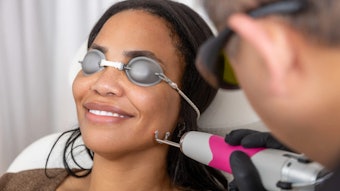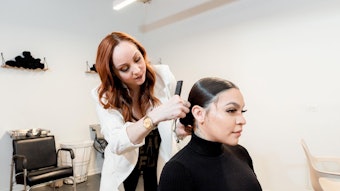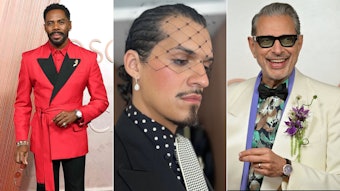
How Could You Be Making Hair Loss Worse?
The most common cause of alopecia in men worldwide is androgenetic alopecia (AGA). However, the most common cause of hair loss in African Americans is Central Centrifugal Cicatricial Alopecia (CCCA). I am an outlier, performing biopsies on 90% of my hair loss patients, and I have diagnosed black men with CCCA more than any other alopecia. What is one of the ways we unintentionally make hair loss worse? Drum roll please: we assume that men with a classic Norwood-scale-type receding hairline have androgenetic alopecia. This answer is usually correct. But when it comes to black men, this is not generally the case.
Educating Your Patients:
Once the diagnosis is made (whether clinically or histologically), the next issue we come up against is the plethora of myths about hair loss floating in every virtual nook and cranny. Biotin, anyone? Educating our patients–before they google the diagnosis in the car after your appointment–is essential. Otherwise, they could substitute your treatment plan for rice water and baking soda. Patients with alopecia are vulnerable; there are plenty of unethical businesses that will sell them snake oil for money, likes and follows.
Take home: Take the time to preemptively address the myths surrounding hair loss.
Treating Hair Loss
We all have recognized the explosion of new treatments for hair loss. For the last few years, I’ve introduced new treatments for alopecia about every six months. This includes growth factors, exosomes, lasers and more. Nonetheless, the tried-and-true methods (minoxidil, hair transplantation, platelet rich fibrin matrix and scalp micro pigmentation) are still effective.
Minoxidil:
Minoxidil solution and foam are affordable and effective but come at a price. I still prescribe minoxidil 12% compound in a solution, foam or ointment. Some prescribe no more than 6%. The solution and foam have high alcohol contents and can trigger trichorrhexis nodosa in the curly hair of black men. Don’t trigger regrowth and breakage at the same time! Most of my black male patients prefer the minoxidil ointment (12% – compounded with a corticosteroid if they have CCCA), as applying a pomade to the hair is a part of their daily grooming practices.
Take home: Compound higher doses of minoxidil and consider ointment vehicles for black men.
Rebound Effect:
I am one of the few dermatologists who is convinced of the severe rebound and worsening of alopecia after patients stop the medication. The exceptions are traction alopecia and alopecia areata. I used to tell patients that if they stopped the minoxidil, they would only lose the progress from the minoxidil. However, once I started tracking patients with digital photography, I recognized that for most patients, the rebound was more severe than expected (based on their baseline rate of hair loss). For example, a patient with gradual worsening of androgenetic alopecia would start prescription minoxidil and then suddenly stop taking the medication (usually from nonadherence). A few months after cessation, photos revealed the trajectory of the alopecia worsened compared to before the initiation of minoxidil. If the patient resumes minoxidil promptly, the progress is completely or nearly completely recovered. As a result, before I prescribe minoxidil, I have the patient verbalize the importance of compliance with this medication in particular. While I can switch between other treatment modalities, I have not had much success switching from minoxidil to another medication without severe rebound after discontinuation.
Take home: Only use minoxidil for your compliant patients.
Continue Reading our Digital Magazine to learn more about treating hair loss in men...
Board-certified dermatologist Chesahna Kindred, MD, MBA practices in Columbia, Maryland, at Kindred Hair & Skin Center — the first dermatology office with a full-service salon specializing in hair loss. She grew up in South Central Los Angeles, earned her BS with a minor in Spanish at the University of Southern California, was the third person in the history of the University of Cincinnati to earn an MD/MBA degree, and later completed dermatology training at Howard University Department of Dermatology. Dr. Kindred is the immediate past chair of the dermatology section of the National Medical Association and founder and president of Onyx Medical Society.











